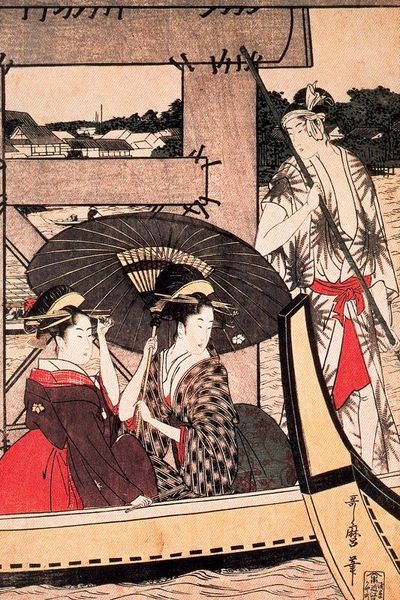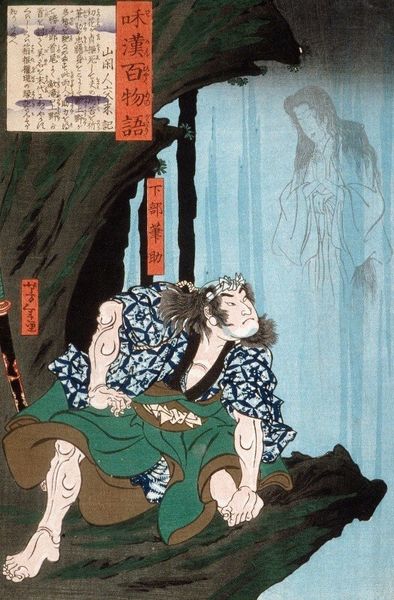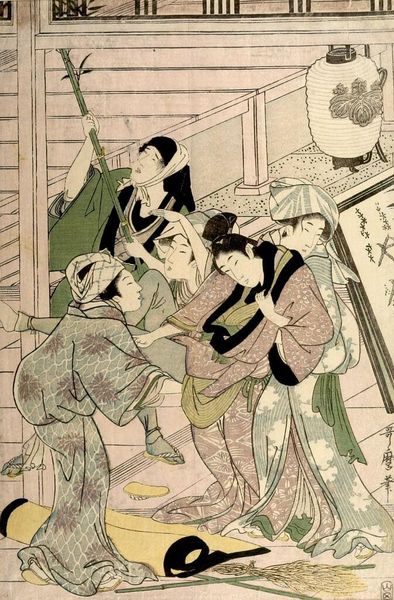
Dimensions: Paper: H. 71.5 cm x W. 11.9 cm (28 1/8 x 4 11/16 in.)
Copyright: CC0 1.0
Curator: What strikes me immediately is the composition—the figures fill the frame, and there's such a tactile quality to the depiction of water. Editor: This is Kitao Shigemasa's "Ebisu and Woman Fishing." Shigemasa, who lived from 1739 to 1820, was instrumental in moving ukiyo-e from actor prints to images of beautiful women and daily life. Curator: Thinking of that daily life, the printmaking process itself, from carving the woodblocks to the application of color, involved the coordinated labor of artisans, reflecting the era's burgeoning urban culture. Editor: And the subject matter, fishing, ties into the representation of women and labor in Edo-period Japan, revealing hierarchies and the economic realities of the time. Who had access to leisure versus necessity? Curator: Absolutely. And the paper itself, its texture, would have been carefully chosen for its ability to absorb the pigments, impacting the final aesthetic. Editor: Right, seeing Ebisu, one of the seven Gods of Fortune, alongside this woman prompts thoughts of gender roles, religious beliefs, and the complex social fabric of Japan in that era. It really captures the intersection of art and life.
Comments
No comments
Be the first to comment and join the conversation on the ultimate creative platform.














